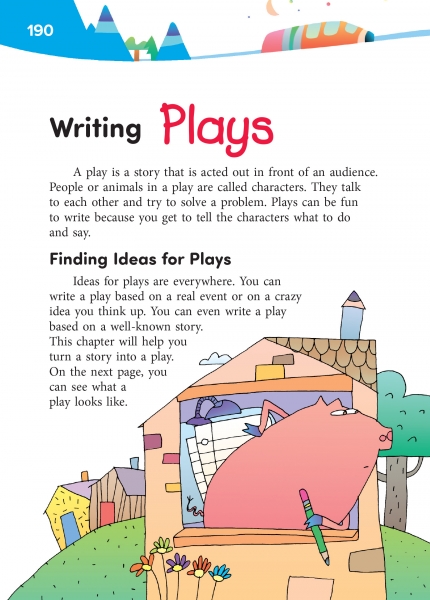Page 190 from

Start-Up Activity
Ask students what the word, "Play" means. They might respond "have fun," and that is definitely one meaning. Ask them what "play music" means, and they will probably say, "perform," or "make." Ask them about putting on a "play," and they will probably say that the word means, "acting."
All of these definitions are correct, of course. Putting on a play is about performing and making, having fun and acting. Plays allow you to tell stories with your voice, your face, your movements, and your friends. They make a story come to life in front of an audience, and they sometimes even involve the audience.
Let your students know that, in this chapter, they will help make a story come to life as a play.
Think About It
“Play: Work that you enjoy doing for nothing.”
—Evan Esar

Start-Up Activity
Ask students what the word, "Play" means. They might respond "have fun," and that is definitely one meaning. Ask them what "play music" means, and they will probably say, "perform," or "make." Ask them about putting on a "play," and they will probably say that the word means, "acting."
All of these definitions are correct, of course. Putting on a play is about performing and making, having fun and acting. Plays allow you to tell stories with your voice, your face, your movements, and your friends. They make a story come to life in front of an audience, and they sometimes even involve the audience.
Let your students know that, in this chapter, they will help make a story come to life as a play.
Think About It
“Play: Work that you enjoy doing for nothing.”
—Evan Esar